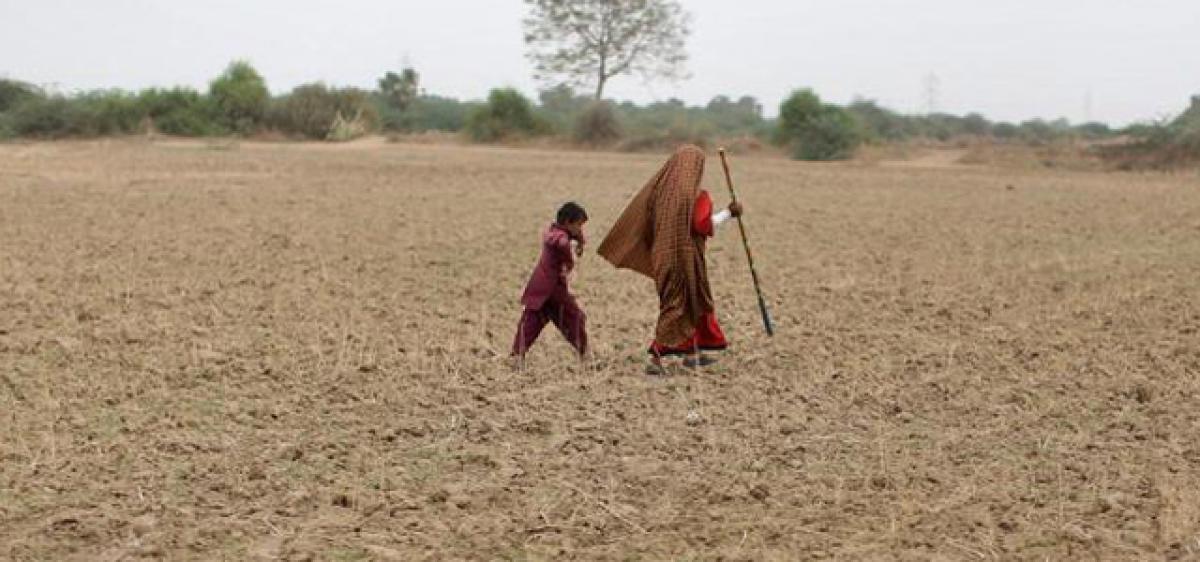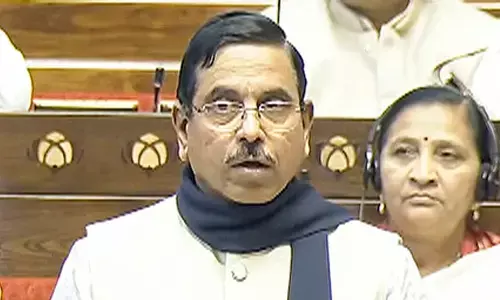Whither project Anantha?

Sir Arthur Cotton said “He who grows two blades of grass where one grew earlier is the greatest benefactor of society.\" Cotton’s wisdom transformed the land of unprecedented floods into India’s rice bowl. The fertile Godavari delta reminds us the importance of natural resources management in rejuvenating parched lands.
Sir Arthur Cotton said “He who grows two blades of grass where one grew earlier is the greatest benefactor of society." Cotton’s wisdom transformed the land of unprecedented floods into India’s rice bowl. The fertile Godavari delta reminds us the importance of natural resources management in rejuvenating parched lands.
Anantapur in Andhra Pradesh is one such district having an immense potential. But water starved economy is turning it into a perennially drought stricken. Water shortages are not unique to us. There are significant national and international experiences in effective management of existing resources to bring in a remarkable change in the situation. Rather than condemning destiny, we should have a will to reverse it.
The agrarian distress of Anantapur has centuries old documentation. The Imperial Gazetteer of India in its provincial series of the Madras Presidency published in 1908 states: Anantapur climate as indeed one of the driest in the whole of its Presidency.
The district does not get the full force of the monsoon and as a consequence, it is often deficit. The monsoon is frequently irregular. The rainfall is insignificant in quantity. The assessment made over a century ago still holds true. It has only worsened further compounding the plight of the people of Andhra Pradesh.
Despite unsustainable agriculture, no significant efforts were ever made to diversify the economic resource base of the district suitable to the climatic conditions prevailing.
Rampant suicides of farmers are an illustration of the acute agricultural distress in the district. The threat of desertification looms large over the region calling for an urgent action. Groundnut remains the predominant crop. As the expert committee of Indian Council of Agricultural Research (ICAR) that studied the endemic agricultural crisis in Anantapur has stated, enhancing productivity of groundnut is critical to its economy. This requires institutionalising seed chain management.
Not just in Anantapur, in many water starved regions of the country, paddy, a water intensive crop is cultivated. This results in drawing water excess of the ground water recharging capacity of the earth’s aquifers resulting in myriad problems. Instead there is an urgent need for diversion from paddy to irrigated dry crops or arid horticulture.
Incomes of farmers can be augmented with value addition to farmer’s produce. The allied sectors can help in this. Especially, milch animals and sheep rearing have most promising sectors for enhancing incomes of farmers. Enhancing area under silvopasture and social forestry with active participation of local farmers is essential.
The crop patterns should be in tune with the agro-climatic patterns. The ICAR high level committee makes specific suggestions like varietal shifts of various crops, promotion of minor millets and pulses etc. The most significant recommendation of the ICAR team was a shift from groundnut to cluster bean or guar cultivation .The expert committee also suggested a ban on banana and oil palm cultivation from the district.
The conservation of water through efficient harvesting measures is the minimum wisdom required in water starved areas. But, the ICAR scientific proposal ran into rough weather due to official intransigence and lack of political will to implement.
For instance, under Project Anantha based on the recommendations of the ICAR expert committee, the authorities encouraged cluster bean and quinoa cultivation. But, the farmers tasted a bad experience and got distanced from it.
The scientific prescription is not wrong. But, the connected measures were not put in place. The farmers who cultivated cluster beans reported poor economic returns as they had to transport the produce to distant regions like Rajasthan.
The promotion of cultivation has to be done along with developing marketing infrastructure and even value addition facilities. The same is the case with cultivation of quinoa. Quinoa – The wonder millet under Project Anantha is still on the official web site.
Quinoa, a pseudo – millet considered to be the staple food of the Andes region from the Inca civilisation days is now finding its place under Project Anantha experiment in which Quinoa was grown both at Hyderabad a year back and in Anantapur district and was met with a runaway success, the official website claims.
In fact, quinoa is known in the Andes by the name ‘Chisaya mama’ which means mother of all grains and is found to containing all the 10 essential amino acids and is low in its glycemic index. It is because of these qualities the world is looking at quinoa as an alternative to the existing food grains, more importantly for people with diabetes.
The experiment carried out at Hyderabad had resulted in emergence of an Indian specific variety which we presently call as ‘Project Anantha Quinoa’ because the experiment was carried out to help primarily the drought affected farmers of Anantapur district.
What is more satisfying is, its leaves are not only fit for human consumption like any other green leafy vegetable but the excess of it can also be fed to the cattle and sheep. This answers certain questions raised by the farmers in Anantapur district is whether the crop can replace groundnut from which they get fodder to their cattle.
But, the above claims are not matched by the field experience of Ananthapur farmers. On an experimental basis, the quinoa was cultivated and the seeds were distributed. But, there is no processing unit in the district. Marketing facilities were also lacking.
As a result the quinoa cultivation of Anantapur largely confined to the experimental stage itself. Though the farmers of the district cultivated cluster beans for some time, there were no facilities for processing and marketing.
The promise of setting up a factory in the district remained on paper. Thus, the farmers were compelled to rely on paddy cultivation wherever little water is available. The failure of the authorities to create marketing facilities is driving Anantapur farmers to unscientific cultivation of paddy in such a water starved region.
The dry land farmers are forced to depend on cotton. But, spurious seeds and virus attack ruined the cotton crops. Thus, the Anantapur farmers are forced to rely on the traditional groundnut crop defeating the objectives of Project Anantha that aimed at diversifying crops to make agriculture here sustainable.
But, the productivity is seriously impaired due to poor crop health. The agonies of the farmers remain. The farmers relied on green gram last year. But, as it turned to be un-remunerative, they are shifting to red gram cultivation.
The ICAR expert committee recommendations for Anantapur are still significant. Groundnut occupies largest area of cultivation in the district. As the efforts to affect a shift in cultivation patterns did not take off, the enhancement of groundnut productivity assumes much greater significance. The ICAR study called for bridging the yield gaps by application of improved varieties, production technologies and value addition.
The district is suitable for low water requiring horticulture crops like custard apple, tamarind, ber, pomegranate etc. In fact, Anantapur is the home for tamarind. In some mandals, pomegranate also can be grown successfully.
However, the committee observed that under National Horticulture Mission (NHM) large scale promotion of sweet orange, papaya and banana are being promoted with micro-irrigation. Since Anantapur is a low rainfall district with high groundwater exploitation, promotion of high water demanding horticulture crops will not be sustainable in the long run.
More investment is needed in terms of fodder production, credit to buy milch animals, sheep units and veterinary extension services rather than introduction of any new technology. The problem is therefore not with science. The public policy on agriculture needs urgent review to ensure that the economy of farmers thrives.


















